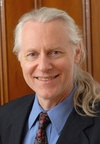 David Booth, PhD
David Booth, PhD
Senior software architect at Hawaii Resource Group and at Rancho BioSciences
Recorded July 23, 2015
Watch Recorded Webinar
Download Slides
Abstract
The President’s Council of Advisors on Science and Technology (PCAST) identified the need for a universal healthcare exchange language as a key enabler for healthcare information interoperability. This presentation briefly explains why Resource Description Framework (RDF) is the “best available candidate” for this use, both in terms of its general characteristics for enabling information information integration and interoperability, and for its suitability to address the particular complexities of healthcare information interoperability. RDF complements other healthcare information standards by providing a common semantic basis for achieving information interoperability without requiring major changes to existing IT infrastructure. RDF is not “just another data format”. It is fundamentally different from other frequently used information representations such as XML or JSON. This presentation explains why.
